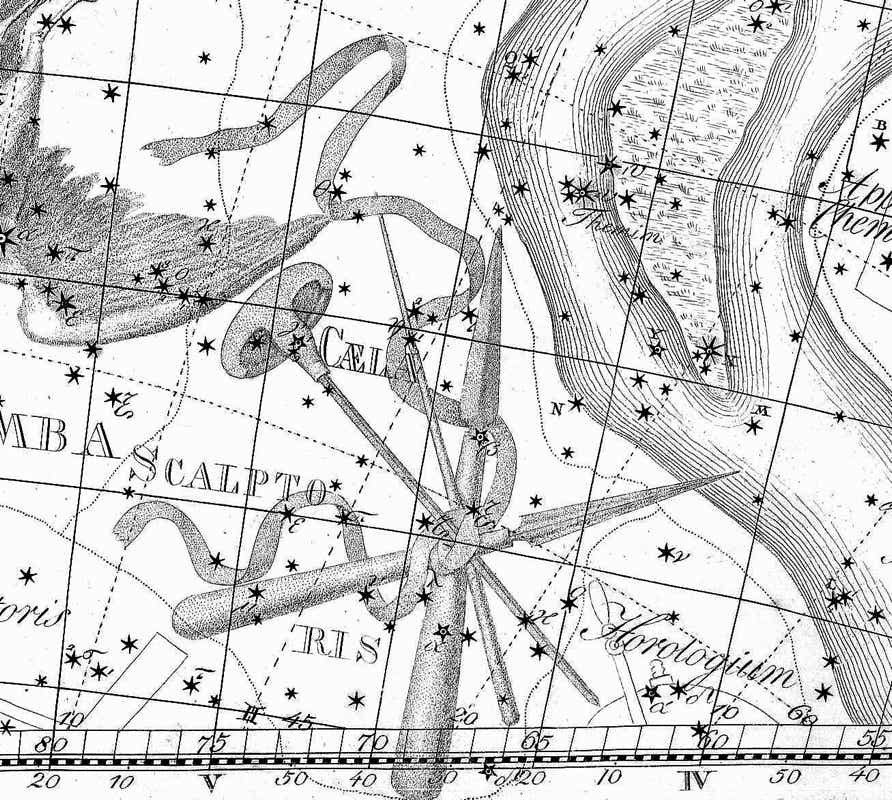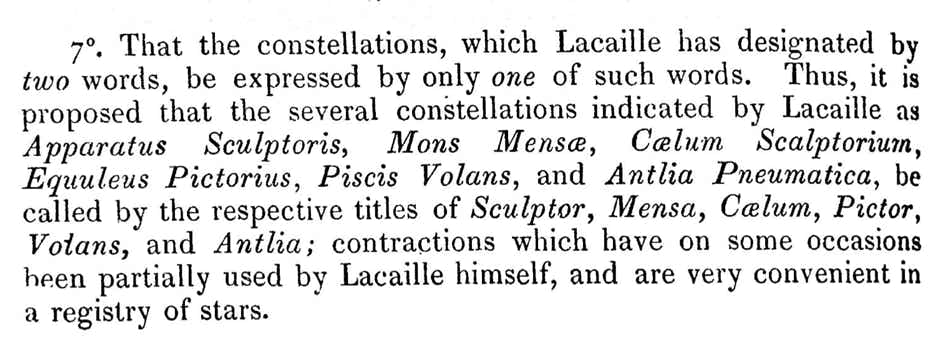
Genitive: Caeli
Abbreviation: Cae
Size ranking: 81st
Origin: The 14 southern constellations of Nicolas Louis de Lacaille
This small and insignificant constellation in the southern hemisphere, representing an engraver’s chisel, is one of the inventions of the 18th-century French astronomer Nicolas Louis de Lacaille. He introduced it on his map of the southern stars published in 1756, where he gave it the French name les Burins (although in the accompanying star catalogue it was listed as Burin, singular). On the second edition of the map in 1763 this was Latinized to Caelum Scalptorium. In 1844 the English astronomer John Herschel proposed shortening the name to Caelum. Francis Baily adopted this suggestion in his British Association Catalogue of 1845, and it has been known as Caelum ever since.
In his notes to the 1756 chart Lacaille said that the constellation represented two engraving tools, crossed and connected by a ribbon. One tool was a burin, a sharp-tipped cold chisel also known as a graver, while the other was an échoppe, a type of etching needle invented by the 17th-century French printmaker Jacques Callot. It is now just referred to as the chisel.
There are no legends associated with the constellation and its stars are faint, of 4th magnitude and below.
Caelum shown as Caela Scalptoris on Chart XVIII of the Uranographia of Johann Bode (1801), who added two scribing tools to the burin and échoppe described by Lacaille. Click for Lacaille’s original depiction.
© Ian Ridpath. All rights reserved
John Herschel proposed shortening the names of six of Lacaille’s southern constellations from two words to one in a paper published in the Monthly Notices of the Royal Astronomical Society in 1844. His proposal was readily adopted, and we now know these constellations as simply Antlia, Caelum, Mensa, Pictor, Sculptor, and Volans.





